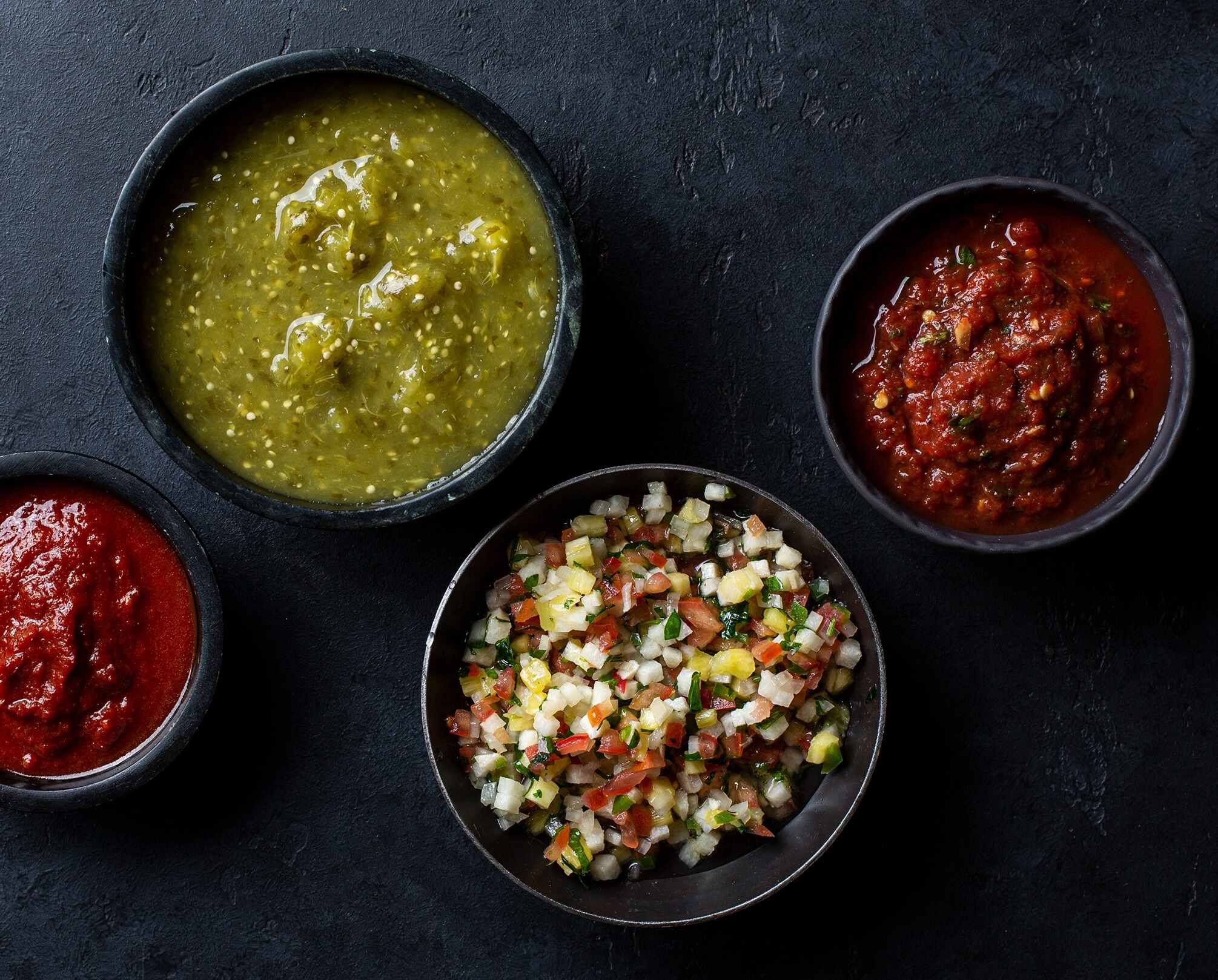
Is salsa just a spicy sauce, or is there more to it? Salsa isn't just a condiment; it's a flavorful journey through history and culture. Originating from the Aztecs, Mayans, and Incas, salsa has evolved into a staple in kitchens worldwide. With its vibrant mix of tomatoes, chilies, and spices, salsa adds a zesty kick to any dish. But did you know there are countless varieties beyond the classic tomato-based version? From fruity mango salsas to smoky chipotle blends, each type offers a unique taste experience. Salsa isn't just about flavor; it's also packed with nutrients like vitamins A and C. Whether you're dipping chips or topping tacos, salsa brings a burst of freshness and excitement to your meals. So next time you reach for that jar, remember there's a whole world of salsa waiting to be explored!
Salsas: A Flavorful Journey
Salsas are more than just a tasty dip for chips. They have a rich history and a variety of uses that make them a staple in many kitchens. Let's dive into some fascinating facts about this beloved condiment.
-
Ancient Origins
Salsas date back to the Aztecs, Mayans, and Incas, who combined tomatoes, chili peppers, and other spices to create flavorful sauces. -
Meaning of Salsa
The word "salsa" means "sauce" in Spanish. It's a fitting name for a condiment that can be as simple or complex as you like. -
Variety of Ingredients
While tomatoes and peppers are common, salsas can include ingredients like mango, pineapple, corn, and even black beans. -
Not Always Spicy
Not all salsas are spicy. Some are mild, focusing more on sweetness or tanginess, depending on the ingredients used. -
Salsa Verde
This green salsa is made with tomatillos instead of tomatoes, giving it a distinct tart flavor. -
Pico de Gallo
Also known as salsa fresca, this chunky salsa is made with fresh, uncooked ingredients like tomatoes, onions, and cilantro. -
Salsa Roja
A classic red salsa, typically made with cooked tomatoes, chili peppers, onions, garlic, and cilantro. -
Salsa's Popularity in the U.S.
In the 1990s, salsa surpassed ketchup as the top-selling condiment in the United States. -
Salsa and Health
Salsas are low in calories and packed with vitamins, making them a healthy addition to meals. -
Salsa and Chips
This popular snack pairing became a staple in Mexican restaurants in the U.S. during the 1940s.
Salsa in Different Cultures
Salsas are not just a Mexican delight. They have found their way into various cuisines around the world, each adding its unique twist.
-
Italian Salsa Verde
This version includes parsley, capers, garlic, and anchovies, often served with fish or meat. -
Argentinian Chimichurri
A green sauce made with parsley, garlic, vinegar, and oil, commonly used as a marinade or condiment for grilled meats. -
Indian Chutney
Similar to salsa, chutneys can be sweet, spicy, or tangy, made from fruits, vegetables, and spices. -
Salsa Criolla
A South American salsa made with onions, peppers, and vinegar, often served with grilled meats. -
Salsa's Role in Fusion Cuisine
Chefs worldwide incorporate salsas into fusion dishes, blending flavors from different cultures.
Fun Salsa Facts
Beyond its culinary uses, salsa has some fun and quirky aspects that might surprise you.
-
Salsa Dance
The term "salsa" also refers to a popular dance style, known for its lively and rhythmic movements. -
Salsa Festivals
Many cities host salsa festivals, celebrating both the food and the dance with competitions and tastings. -
Salsa in Space
Astronauts have taken salsa to space as a flavorful addition to their meals. -
Salsa in Pop Culture
Salsa has been featured in movies, TV shows, and even songs, highlighting its cultural significance. -
Salsa Competitions
There are contests dedicated to creating the best salsa, with categories for taste, creativity, and presentation.
Making Your Own Salsa
Creating salsa at home is easy and allows for endless customization. Here are some interesting tidbits about homemade salsas.
-
Fresh vs. Cooked
Fresh salsas offer a crisp texture, while cooked salsas have a deeper, more blended flavor. -
Adjusting Heat Levels
Control the spiciness by choosing different types of peppers, from mild bell peppers to fiery habaneros. -
Experimenting with Flavors
Try adding unexpected ingredients like avocado, cucumber, or even chocolate for a unique twist. -
Preserving Salsa
Homemade salsas can be canned or frozen, allowing you to enjoy them year-round.
Salsa's Flavorful Finale
Salsa isn't just a condiment; it's a cultural experience. From the spicy heat of jalapeños to the tangy zest of lime, each ingredient tells a story. Whether you're a fan of traditional tomato-based salsas or prefer the fruity twist of mango or pineapple, there's a salsa for every palate. It's fascinating how salsas have evolved, blending ingredients from different cultures to create something uniquely delicious. They're not just for tortilla chips either; try them on grilled meats, tacos, or even eggs for a burst of flavor. Next time you dip into a bowl of salsa, remember you're tasting a piece of history. So, go ahead, experiment with recipes, and maybe even create your own signature blend. Salsa is all about celebrating flavors and bringing people together around the table.
Was this page helpful?
Our commitment to delivering trustworthy and engaging content is at the heart of what we do. Each fact on our site is contributed by real users like you, bringing a wealth of diverse insights and information. To ensure the highest standards of accuracy and reliability, our dedicated editors meticulously review each submission. This process guarantees that the facts we share are not only fascinating but also credible. Trust in our commitment to quality and authenticity as you explore and learn with us.


